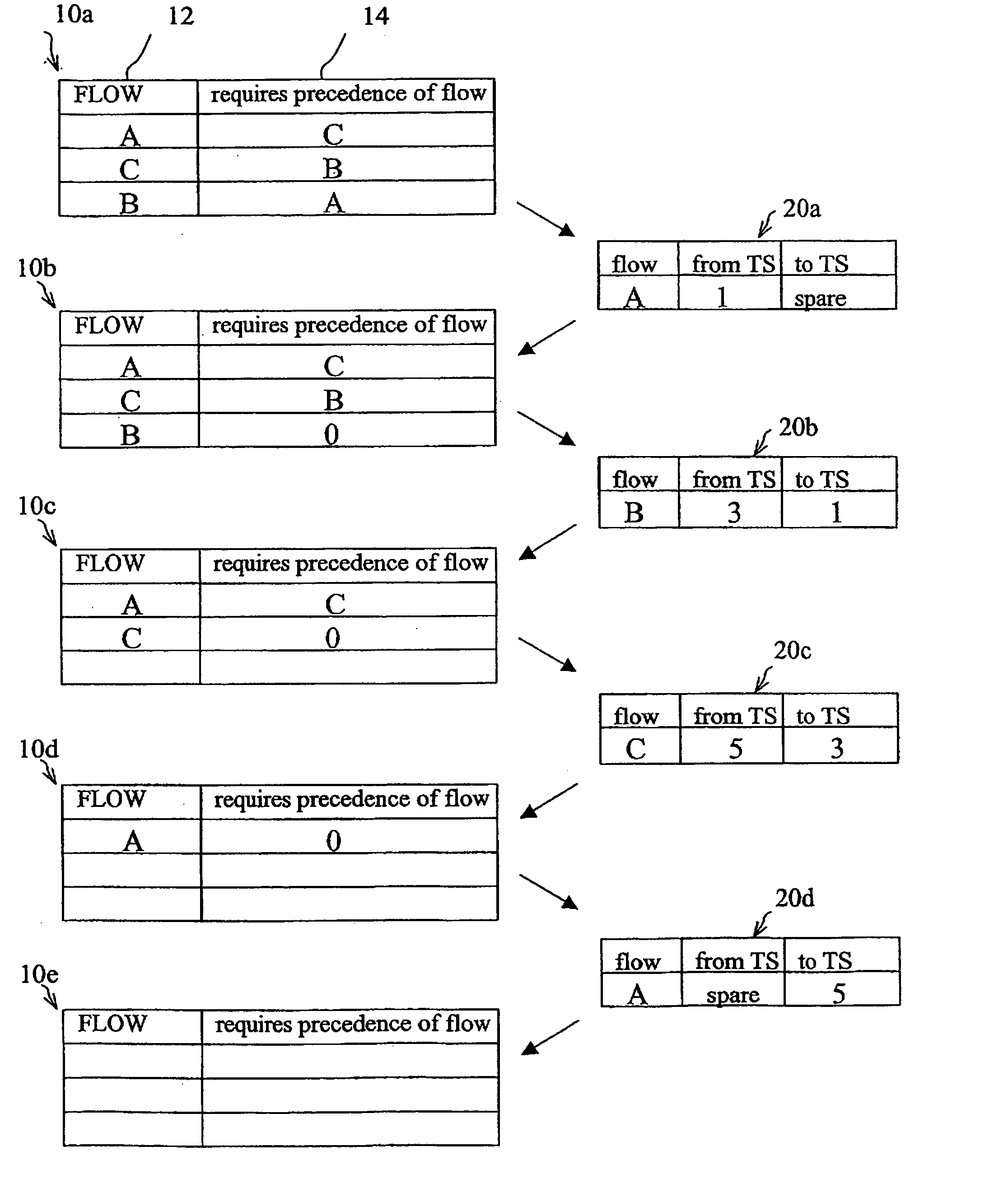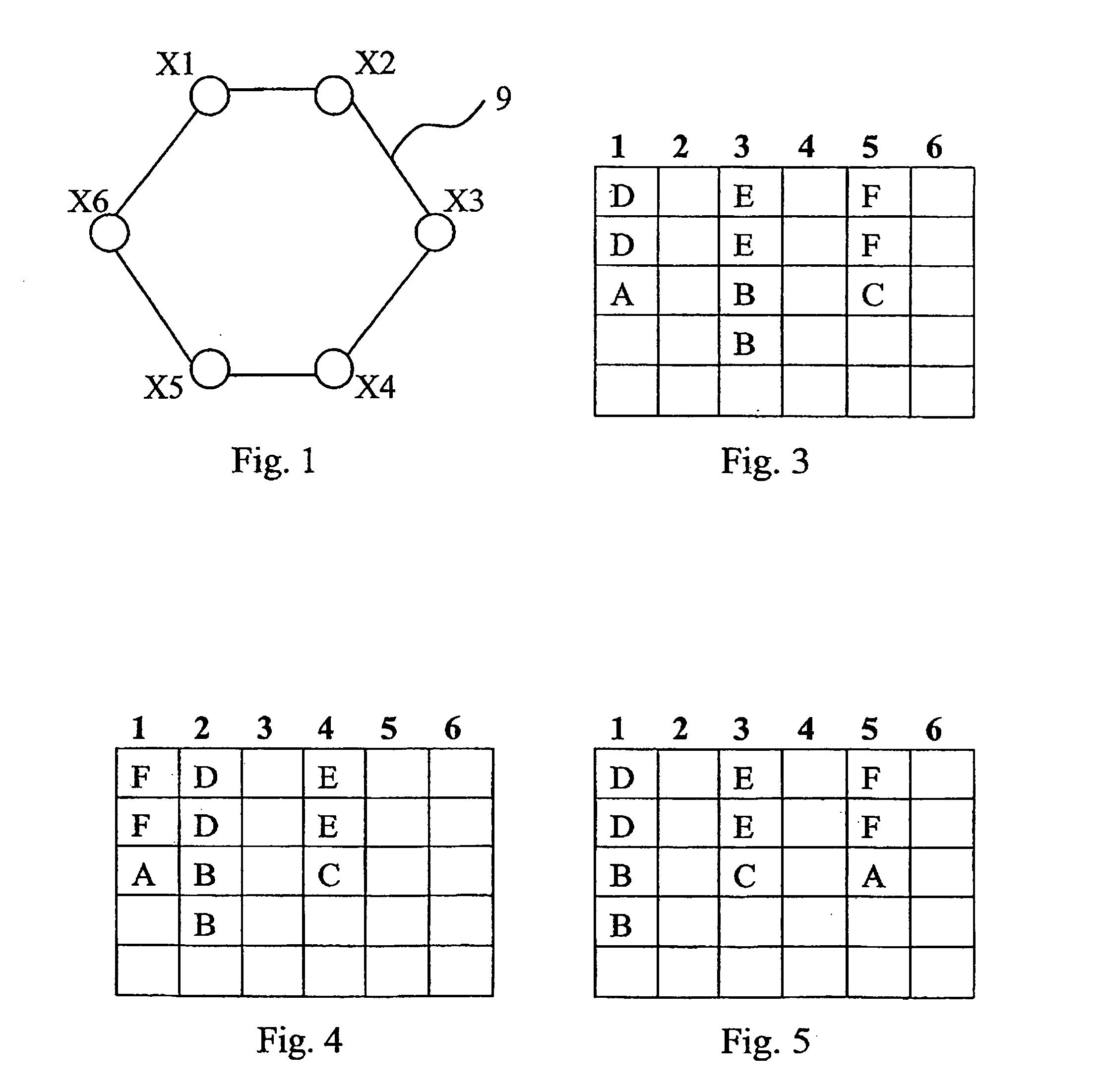Procedure for sorting flows in a transport network carrying circuit data flows
a technology of circuit data flow and flow sorting, which is applied in the field of circuit data flow sorting process, can solve the problems of inability to practice, flow untidy and irregular, and is more difficult to use in the future,
- Summary
- Abstract
- Description
- Claims
- Application Information
AI Technical Summary
Benefits of technology
Problems solved by technology
Method used
Image
Examples
Embodiment Construction
[0024] The following detailed description illustrates a flow sorting procedure in a transport network ring sub-network carrying circuit data flows. The sub-network is schematically shown as a set of slots (which are time, spatial, frequency or wavelength intervals between pairs of linked sites). Specifically, the illustrated procedure can be applied to sorting SDH / SONET (Time Division Multiplexing) type networks and WDM (Frequency Division Multiplexing) type networks. The term “slot” will be used to indicate “time slots” in the case of SDH / SONET networks and “λ-slots” in the case of WDM networks.
[0025] Similarly, the invention can be applied to networks in which data flow multiplexing is obtained through either space division (SDM, Space Division Multiplexing) or frequency division (FDM, Frequency Division Multiplexing), in which case the term “slot” will be associated to space and frequency intervals, respectively.
[0026] The ring sub-network may implement MS-SPRing technology (OM...
PUM
 Login to View More
Login to View More Abstract
Description
Claims
Application Information
 Login to View More
Login to View More - R&D
- Intellectual Property
- Life Sciences
- Materials
- Tech Scout
- Unparalleled Data Quality
- Higher Quality Content
- 60% Fewer Hallucinations
Browse by: Latest US Patents, China's latest patents, Technical Efficacy Thesaurus, Application Domain, Technology Topic, Popular Technical Reports.
© 2025 PatSnap. All rights reserved.Legal|Privacy policy|Modern Slavery Act Transparency Statement|Sitemap|About US| Contact US: help@patsnap.com



